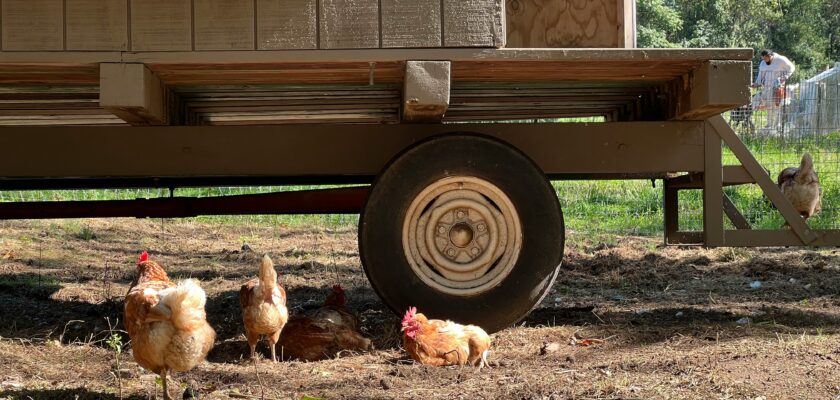Introduction
A mobile chicken coop offers flexibility and efficiency for backyard poultry enthusiasts. Whether you’re a novice or an experienced chicken keeper, understanding the benefits and features of mobile coops can enhance your poultry-keeping experience.
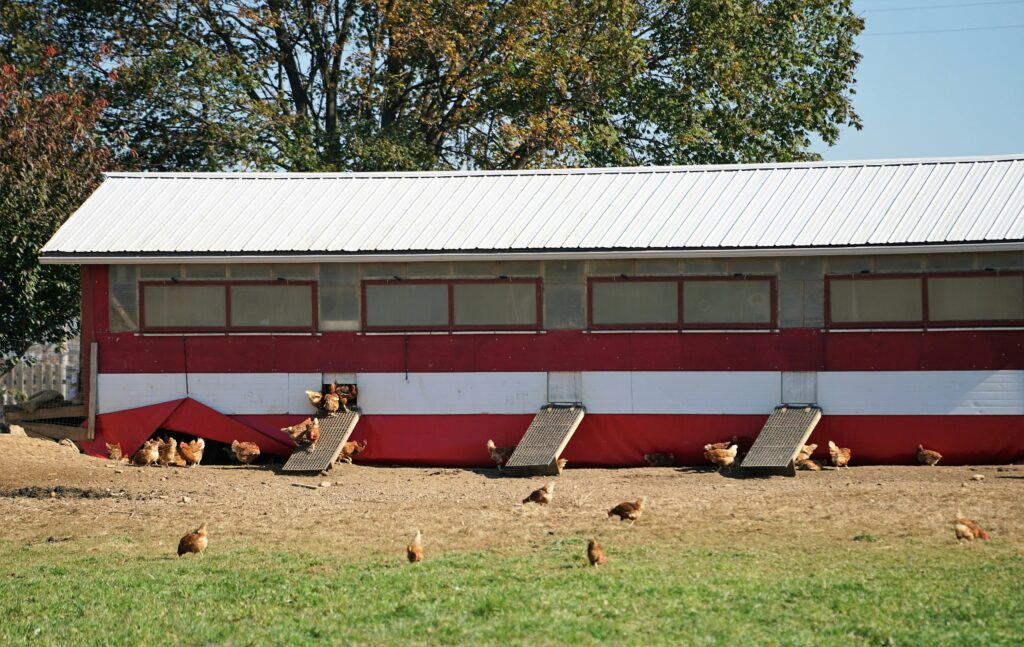
Photo by Vito Natale on Unsplash
What Is a Mobile Chicken Coop?
A mobile chicken coop, often referred to as a “chicken tractor,” is a portable housing structure designed to move chickens to fresh foraging grounds. These coops lack a fixed floor, allowing chickens to graze directly on the ground, promoting natural behaviors and reducing feed costs.
Why Choose a Mobile Chicken Coop?
- Enhanced Chicken Health: Regular movement to fresh pasture reduces disease risk and promotes natural foraging.
- Soil Fertilization: Chicken droppings act as natural fertilizer, enriching the soil as the coop moves
- Pest Control: Chickens help control pests by consuming insects and weeds.
- Cost Efficiency: Reduced need for commercial feed due to natural foraging.
- Flexibility: Easy relocation prevents overgrazing and maintains lawn health.
Key Features to Look For in a Mobile Coop
- Sturdy Wheels: Ensure easy movement across various terrains.
- Ventilation: Proper airflow prevents moisture buildup and maintains air quality.
- Predator Protection: Secure latches and durable materials safeguard chickens from predators.
- Ease of Access: Features like lift-up roofs or side doors facilitate cleaning and egg collection.
- Weather Resistance: Materials like galvanized wire mesh and waterproof roofing protect against elements.
Best Materials for Mobile Chicken Coops
- Wood: Offers insulation but requires treatment against moisture and pests.
- Metal: Durable and resistant to predators but may require insulation in extreme temperatures.
- Plastic: Lightweight and easy to clean but may lack durability.
Chicken Coop Size Guide
| Number of Chickens | Minimum Coop Size |
| 2-4 | 4-6 sq ft |
| 5-8 | 8-12 sq ft |
| 9-12 | 12-16 sq ft |
Ensure each chicken has at least 2-3 sq ft inside the coop and 8-10 sq ft in the run.
Ventilation and Climate Control
- Windows and Vents: Positioned to allow cross-ventilation.
- Insulation: Essential for extreme climates to maintain optimal temperatures.
- Shading: Provides relief during hot weather.
Flooring Options for Mobility & Hygiene
- Wire Mesh Floors: Allow droppings to fall through, reducing cleaning frequency.
- Removable Trays: Facilitate easy cleaning and waste disposal.
- Deep Litter Method: Utilizes bedding materials that compost over time, reducing odor and maintenance.
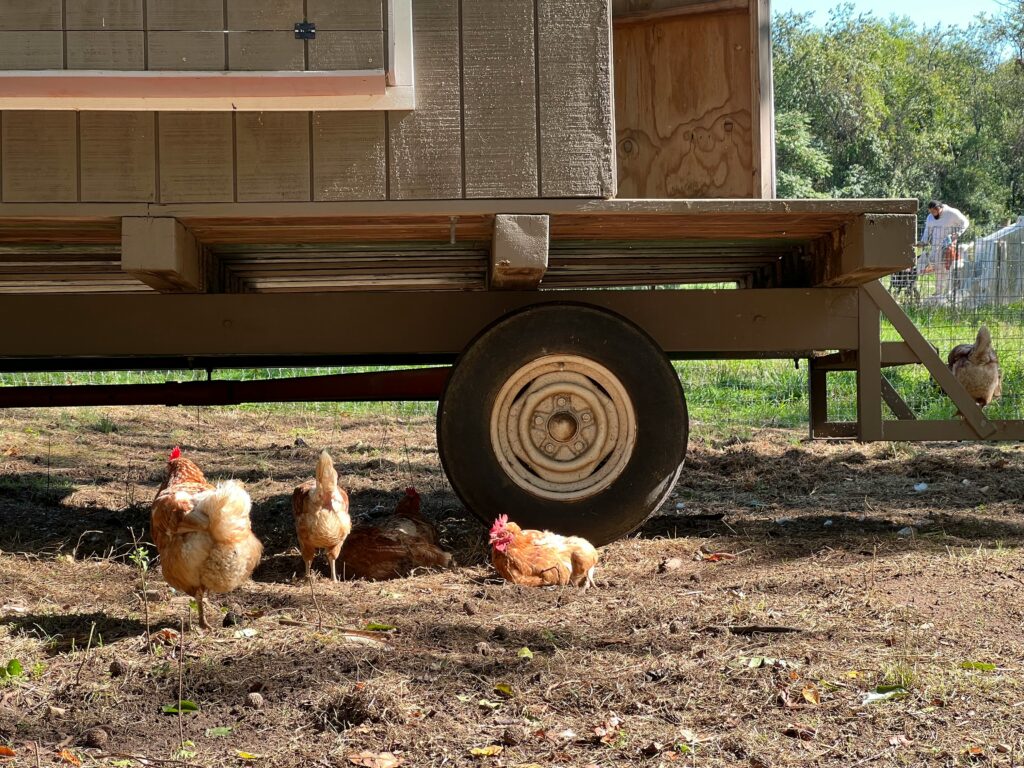
Photo by Maria Lin Kim on Unsplash
Predator-Proofing Your Mobile Coop
- Hardware Cloth: Stronger than chicken wire, preventing predator entry.
- Secure Latches: Prevent raccoons and other animals from accessing the coop.
- Elevated Design: Keeps chickens off the ground, deterring predators.
Smart Design Tips for Easy Movement
- Lightweight Materials: Facilitate easier relocation.
- Handles or Pull Bars: Assist in maneuvering the coop.
- Balanced Weight Distribution: Prevents tipping during movement.
Chicken Tractor vs. Mobile Coop
| Feature | Chicken Tractor | Mobile Coop |
| Floor | Open to ground | May have a floor |
| Mobility | Highly portable | Varies |
| Foraging Access | Direct | May require separate run |
| Protection Level | Moderate | Higher |
Where to Buy Mobile Chicken Coops
- Online Retailers: Platforms like Amazon offer various models, such as the Aivituvin mobile chicken coop, which combines functionality with charm and is tailored for backyard chicken enthusiasts.
- Local Farm Stores: Provide options to see coops in person and consult with experts.
- Specialty Manufacturers: Offer customizable and high-quality coops.
DIY Mobile Chicken Coop: Step-by-Step Guide
- Design Planning: Determine the size and features needed.
- Material Selection: Choose durable and weather-resistant materials.
- Roof Installation: Ensure it’s waterproof and provides adequate ventilation.
- Add Wheels and Handles: Facilitate mobility.
- Install Nesting Boxes and Roosts: Provide comfortable areas for laying and resting.
- Predator-Proofing: Secure all openings and reinforce with hardware cloth.
Budget vs. Premium: Which One’s Worth It?
- Budget Coops: Affordable but may lack durability and features.
- Premium Coops: Higher upfront cost but offer longevity, better materials, and enhanced features.
Mistakes to Avoid When Buying a Mobile Coop
- Ignoring Size Requirements: Overcrowding can lead to health issues.
- Poor Ventilation: Leads to moisture buildup and respiratory problems.
- Inadequate Predator Protection: Compromises chicken safety.
Seasonal Considerations for Coop Setup
- Winter: Insulate the coop and ensure protection against drafts.
- Summer: Provide ample shade and ventilation to prevent overheating.
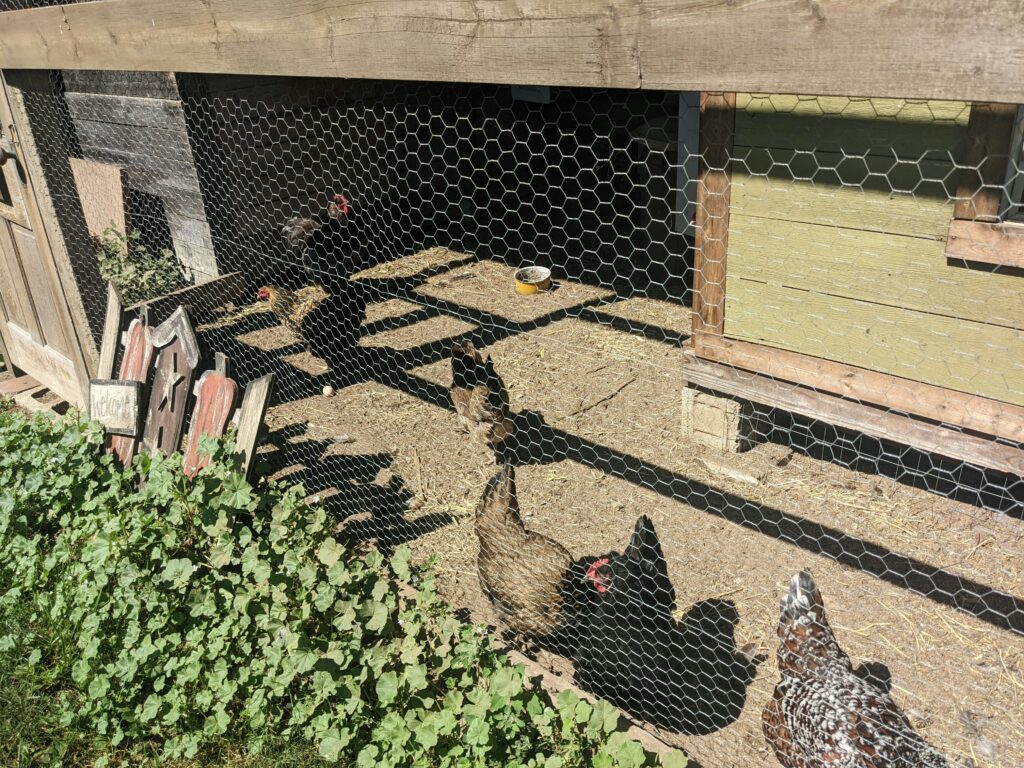
Maintaining Your Mobile Chicken Coop
- Regular Cleaning: Prevents disease and odor buildup.
- Inspect for Wear and Tear: Regularly check wheels, latches, and structural integrity.
- Update Bedding: Maintain cleanliness and comfort.
Chicken Health & Egg Production in Mobile Coops
Mobile coops promote natural behaviors, leading to healthier chickens and improved egg production. Access to fresh forage reduces stress and enhances nutrition.
Sustainable Practices for Eco-Friendly Chicken Keeping
- Composting: Utilize chicken manure for garden fertilization.
- Rainwater Collection: Provides a sustainable water source.
- Solar Lighting: Reduces energy consumption.
Real User Reviews & Case Studies
Many backyard farmers have shared positive experiences with mobile coops, highlighting benefits like improved chicken health, ease of maintenance, and enhanced egg quality.
Where to Place Your Mobile Chicken Coop
- Sunlight: Ensure chickens receive adequate light for egg production.
- Shade: Protects chickens from overheating.
- Dry Ground: Prevents moisture buildup and maintains coop integrity.
FAQs
Q1: How often should I move my mobile chicken coop?
A1: It’s recommended to move the coop every 1-3 days to provide fresh foraging grounds and prevent overgrazing.
Q2: Can I use a mobile coop in winter?
A2: Yes, with proper insulation and weatherproofing, mobile coops can be used year-round.
Q3: How many chickens can I keep in a mobile coop?
A3: It depends on the coop size; ensure each chicken has at least 2-3 sq ft inside the coop and 8-10 sq ft in the run.
Q4: Are mobile chicken coops safe from predators?
A4: Yes, if designed properly. Use hardware cloth instead of chicken wire, install predator-proof latches, and ensure the coop is well-anchored to the ground to protect your flock.
Q5: Can mobile chicken coops handle rough terrain?
A5: Most high-quality mobile coops come with sturdy wheels or skids that allow for movement across uneven ground. However, it’s best to test the terrain beforehand or reinforce the wheels and frame for stability.
Q6: Do mobile chicken coops affect egg production?
A6: In a positive way. Mobile coops often improve laying conditions by allowing hens to forage freely, reducing stress and increasing access to natural food sources, which supports better egg quality and frequency.
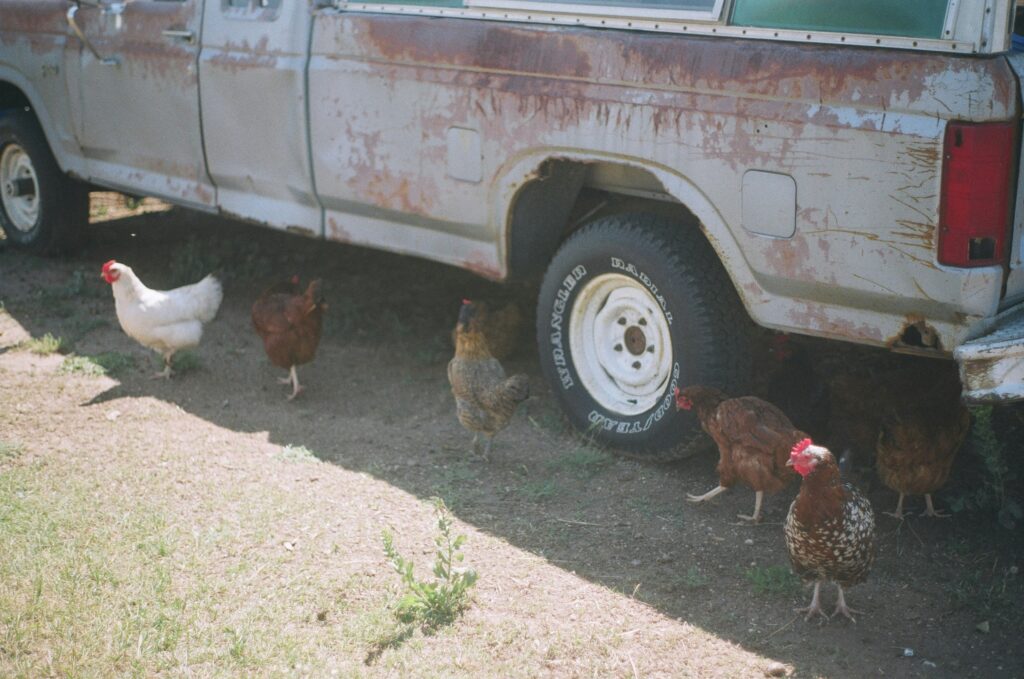
Photo by Brandon Hoogenboom on Unsplash
Conclusion
Improving your chicken-keeping setup with a mobile chicken coop for sale is more than a trend—it’s a practical and rewarding solution for poultry health, land management, and egg productivity. With the right design, materials, and maintenance habits, your mobile coop will become a reliable shelter that adapts with your flock’s needs across seasons.
